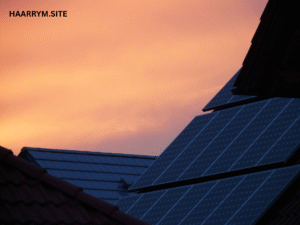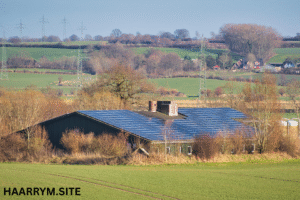
People are looking for greener, more sustainable methods of producing electricity more and more in the environmentally sensitive world of today. The solar generator is one well-liked fix causing waves in homes, RVs, and even during outdoor activities. Exactly, however, how does a solar generator operate?
You are at the proper spot if you want a thorough, simple, understandable analysis and are interested in this technology. This blog article will go over solar generator mechanics, components, advantages, and applications as well as why they can be the perfect power backup for your way of life.
Describes a Solar Generator:
Let us define a solar generator first before delving into the specifics. Using solar panels, a solar generator gathers solar energy from the sun and stores it in a battery for eventual use. Solar generators are a cleaner, quieter, and more ecologically friendly choice than conventional gas-powered generators as they do not depend on fossil fuels.
Particularly sought for are solar generators for:
-
Emergency backup electricity during blackouts
-
Camping and RV excursions
-
Living off-grid
-
Running appliances and little devices
Important Parts of a Solar Generator
Analyzing the main parts of a solar generator helps one to grasp its operation. Typical solar generators consist of:
1. Panels Solar
These gather sunlight and convert it into direct current (DC) power. The quality and size of the panels greatly affect how well your solar generator runs.
2. Charge Controller
From the solar panels to the battery, the charge controller controls the voltage and current arriving. It guarantees a constant intake of energy and helps to avoid overcharging of the battery.
3. Charged Battery
The solar panels’ collected energy is stored in the battery for eventual usage. Lead-acid or lithium-ion batteries are used most in solar generators; lithium-ion is the most efficient and light weight choice.
4. Inverter
Most home appliances operate on alternating current (AC), hence the inverter’s job is to translate the DC power stored from the battery into AC power.
How Operates a Solar Generator?
A solar generator operates as follows step by step:
First Step: Gathering Sunlight
Sunlight is absorbed by solar panels and transformed into DC power. The size, efficiency, and sunshine exposure of the panel determine the produced power level.
Second: Energy Control
The produced DC current goes to the charge controller, which controls the voltage and prevents overcharging or damage of batteries.
Third Step: Storage of Energy
Once under control, the energy finds residence in the battery. Whether it’s daylight or evening, you may utilize this saved power whenever you need it.
Fourth: Power Conversion
The inverter turns the stored DC power into AC electricity when you put in an electrical gadget so your appliances may run as they should.
Advantages of a Solar Generator
Knowing how a solar generator works now lets us discuss some of the main advantages of running one:
1. Environmental Friendliness
A sustainable substitute for gas-powered versions, solar generators emit nothing. They make use of sustainable, clean solar energy.
2. Quiet Work
Solar generators function quietly, unlike conventional generators which could be noisy and intrusive. They are therefore ideal for usage in campgrounds, RVs, and residences.
3. Simple Maintenance
Less moving components in solar generators than in fuel-powered generators mean. Reduced wear and tear as well as reduced maintenance hassles follow from this.
4. Economically Conscious Over Time
Although the initial outlay might be more, over time you save money by cutting power bills and minimizing gasoline expenditures.
5. Mobile Nature
For outdoor activities or transportable power demands, many solar generators are small and light, perfect.
Common Applications for Solar Generators
Solar generators’ adaptability helps one to use them in many different contexts:
-
Keep lights, freezers, or medical equipment functioning during blackouts.
-
While off-grid, charge phones, flashlights, and culinary tools for camping and hiking.
-
RV Living: On the road, run power appliances and gadgets independent of campground electricity.
-
Remote Work: Make sure rural Wi-Fi routers and laptop computers have a consistent power supply.
-
Construction Sites: Use power tools and equipment free of a loud, gas-powered generator.
Sun Generator Limitations
Solar generators provide numerous benefits, but it’s also crucial to recognize their limitations:
-
Restricted Power Output: Their fit lies on low to moderate power consumption. High-energy equipment such as big ovens or central air conditioning units might call for more strong power systems.
-
Dependence on Sunlight: Solar panels create electricity from sunlight, so they depend on it. Days of clouds or rain might lower performance.
-
Upfront Cost: Though over time they save money, the upfront cost for quality units can be rather expensive.
Selecting the Correct Solar Generator
Here are some pointers to assist you select a solar generator if you are considering buying one:
1. Calculate Your Required Authority
List the appliances you wish to run along with their wattage. This will enable your selection of a generator with the suitable inverter size and battery capacity.
2. Evaluate Battery Capacity
Watt-hours (Wh) define battery capacity. The generator can run your appliances for longer the higher its capacity.
3. Assess Portability
Choose a light-weight and small design if you intend to use your generator for camping or travel.
4. Solar Panel Fitment
Make sure the generator either fits panels you already own or plan to acquire or comes with solar panels.
5. Search for Additional Features
Convenience and usability can be added by features including many charging ports, LCD screens, Wi-Fi connectivity, and quick-charge capability.
Well-Known Solar Generator Brands
Among the most reliable names on the solar generator market are:
-
Jackery: Renowned for fast charging, portable, premium generators.
-
Goal Zero: Provides tough and dependable generators for outdoor aficionados.
-
Bluetti: Provides huge-capacity models for heavy-duty application.
-
EcoFlow: Well-known for creative ideas and ultra-fast charging capability.
Thoughts on Final Matters
How then does a solar generator function? Simply said, it uses panels to gather sunlight, stores that energy in a battery, and generates useable electricity as needed. Whether you are getting ready for a power outage or organizing your next off-grid excursion, this environmentally friendly, portable, and reasonably priced solution is changing our perspective on energy.
Solar generators are getting more affordable, efficient, and easily available as solar technology develops. Investing in a solar generator can be a wise choice toward energy independence and sustainability regardless of your experience with solar power.
